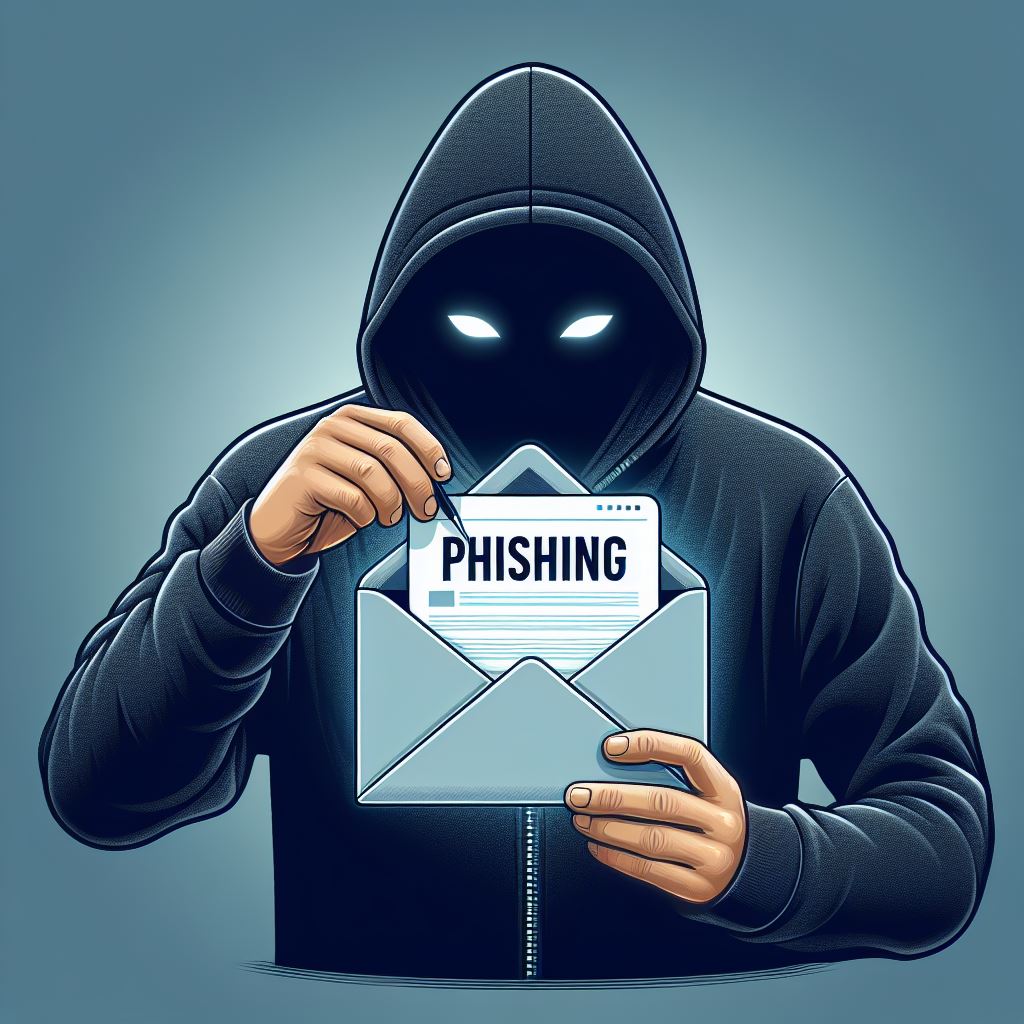In today’s digital world, phishing emails pose a constant threat to our online security. These fraudulent emails aim to steal sensitive information and can lead to significant financial losses or even identity theft. Therefore, it is crucial to know how to protect ourselves from phishing emails. In this blog post, I will present some important tips and warning signs to help you recognize and avoid phishing attacks.
1. Recognizing Phishing Emails
Phishing emails often have certain characteristics that distinguish them from legitimate emails, including:
- Spelling and grammar errors: Phishing emails often contain numerous errors.
- Suspicious sender addresses: Unusual domain names or deviations from known addresses.
- Unusual requests: Asking for personal or financial information is a clear warning signal.
- Urgent requests: Emails that demand immediate action are suspicious.
2. Risks of Phishing Attacks
Interacting with phishing emails involves significant risks, such as:
- Identity theft: Your personal information can be stolen and misused.
- Financial losses: Fraudsters can gain access to your financial accounts.
- Malware infections: Phishing emails can introduce malware or viruses to your computer or mobile device.
3. Examples of Phishing Emails
Here are some examples of what phishing emails might look like:
- Bank phishing: An email that pretends to be from your bank and asks you to verify your account information by clicking on a suspicious link.
- E-commerce phishing: An email that pretends to be from a trusted company like PayPal, Amazon, or Booking.com and asks you to enter your password or other personal data to resolve an alleged issue with your account.
- Social media phishing: Phishing attacks can also occur via platforms like Facebook, WhatsApp, or Google, asking for your login credentials.
4. Protective Measures
To protect yourself from phishing emails, you should take the following measures:
- Check the sender’s address: Do not click on links or attachments if you cannot clearly identify the sender.
- Never share personal information: Be cautious when asked to provide sensitive data.
- Use security software: Antivirus programs and firewalls can help block malicious software.
5. Warning Signs of Phishing Emails
Look out for the following warning signs:
- Unexpected requests: Especially for personal or financial information.
- Threats or enticing promises: If something seems too good to be true, it is likely a scam.
- Urgent calls to action: Emails that demand immediate action should be viewed with skepticism.
6. What to Do if You Fall for Phishing
If you have fallen for phishing, you should act immediately:
- Change your passwords: Start with the affected account and then change all other important passwords.
- Contact your bank: Inform your bank about the incident to prevent unauthorized transactions.
- Report the incident: Notify the relevant authorities or organizations.
7. Anti-Phishing Strategies for Businesses
Businesses can take various measures to protect themselves from phishing attacks:
- Phishing simulations: Regular simulations can help employees recognize phishing emails.
- Awareness programs: Training and awareness campaigns are crucial.
- Security software: Invest in high-quality antivirus and anti-phishing software.
- Phishing service providers: Use specialized providers to strengthen your security strategy.
8. Specific Phishing Threats
There are various types of phishing threats that require specific strategies:
- URL phishing: Fraudulent links that appear legitimate.
- Spear phishing: A targeted form of phishing focused on a specific individual or organization. Characteristics of spear phishing attacks include personalized messages and specific information about the target.
- Malware phishing: Emails that contain malicious software.
9. Phishing on Different Platforms
Phishing can occur on different platforms:
- Facebook: Phishing messages that aim to steal login credentials.
- WhatsApp: Fraudulent messages with malicious links.
- Google: Fake Google services asking for your login details.
- Amazon: Fraudulent emails pretending to be from Amazon.
10. Protection Against Phishing Viruses
Phishing viruses can cause significant damage. Here are some protective measures:
- Keep your software updated: Ensure your systems and software are up to date.
- Be cautious with attachments: Do not open attachments from unknown senders.
- Use anti-phishing tools: These tools can detect and block suspicious emails.
11. Definitions and Explanations
To better understand, here are some definitions:
- Phishing: The attempt to steal sensitive information through fraudulent emails.
- Spear phishing: A targeted form of phishing aimed at a specific person or organization.
- Phishing links: Links in emails that lead to fraudulent websites.
- Phishing emails: Fraudulent emails aimed at stealing personal information.
- Scam emails: A general term for fraudulent emails.
- Phishing definition: An explanation of what phishing is and how it works.
- Spear phishing definition: A detailed explanation of what spear phishing is and how it differs from general phishing.
- Phishing credit card: A specific type of phishing that aims to steal credit card information.
- Password phishing: Attacks aimed at stealing passwords.
- Antivirus phishing: Using antivirus software to detect and block phishing attempts.
- Recognizing phishing emails: Methods and techniques to identify phishing emails.
By being aware of phishing emails and taking appropriate precautions, we can ensure our online security and protect our personal data. Visit our marketplace for information security, IT security and cyber security, where you can find providers of phishing simulations to train your employees and better protect your company against cyberattacks. Invest in your company’s security and stay one step ahead!
